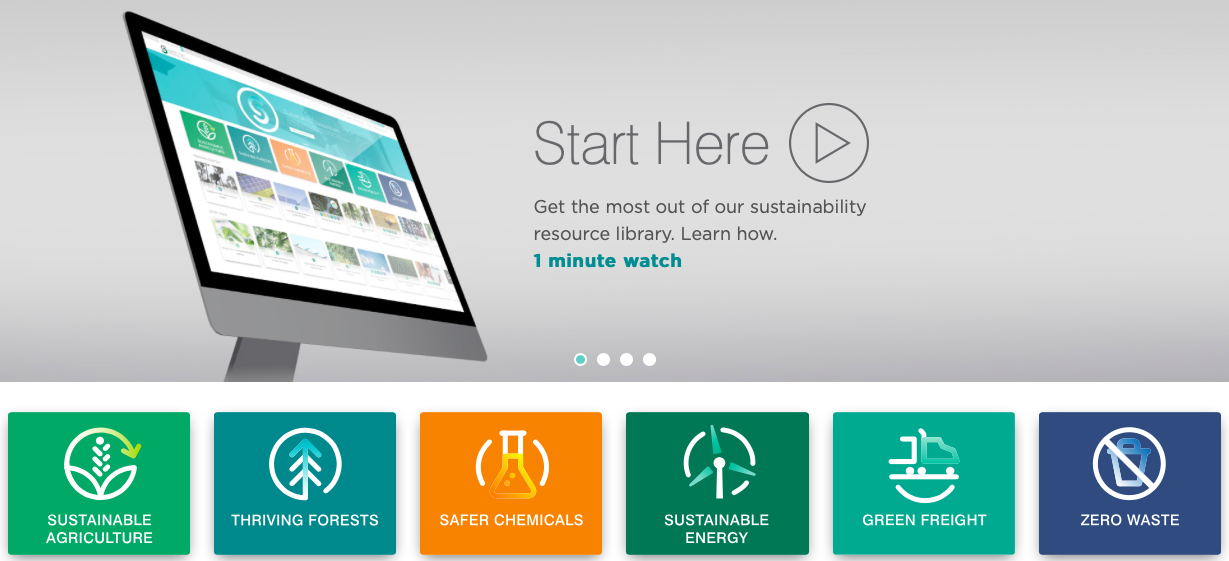Material and Resource Stewardship
Description
Including material stewardship; resource efficiency in processes and value chain; achieving maximum use from resources; and maintaining goods to extend working life.
Share this Subissue on:LinkedIn
Resources
Product and Materials Stewardship: A Getting Started Guide
We are consuming more than ever before, generating more waste than ever before, and failing to recover materials for re-use. Many companies realise that they need to integrate product and material stewardship into their strategy, but lack clarity on the work needed to develop and achieve their goals. Anchored in research, our Product and Materials Stewardship: A Getting Started Guide aims to support your company as it begins or revisits an embedded product and materials strategy. It helps build a foundational understanding of the issue and provides clarity on the work ahead.
The Supply Chain Solutions Center
Launched by the Environmental Defense Fund, the Supply Chain Solutions Center is a “crowdsourced” knowledge resource hub. The library’s current focus is on agriculture, energy, chemicals, waste, forests, and freight, and provides sustainability resources, best practices, case studies, reports, executive interviews, strategy templates, webcasts, and news that will support you in learning about these issues, assessing risk, setting goals, measuring, and reporting. The Solutions Center also brings together sustainability and supply chain professionals, creating a space where platform users can connect and collaborate with other experts.
Global Resources Outlook 2024
This comprehensive resource from UNEP can help you to understand how resources are essential to achieving the Sustainable Development Goals and tackling the polycrisis. Building on more than 15 years of work by the International Resource Panel, including scientific assessments and inputs from countries, stakeholders in the field, and regional experts, the report illustrates how rising trends in global resource use have continued or accelerated, and maps out how demand for resources is expected to continue increasing in the coming decades. It explains why sustainable resource management is urgently needed, and highlights the transformative actions that the global community must immediately pursue. This resource will be beneficial to a wide spectrum of sustainability, procurement, and strategy professionals.
Global Material Resources Outlook to 2060: Economic Drivers and Environmental Consequences
This comprehensive report from the OECD presents global projections of materials use and their environmental consequences, providing a quantitative outlook to 2060 at the global, sectoral, and regional level. It explains the economic drivers determining the decoupling of economic growth and materials use; provides projections of economic baseline scenarios, economic drivers of materials use, primary materials use, and of recycling and secondary materials; and features case studies on demand and supply risks for specific materials. This report will be especially beneficial to sustainability and procurement professionals.
The IPBES Assessment Report on the Sustainable Use of Wild Species
Billions of people benefit daily from the use of wild species for food, energy, materials, medicine, recreation, inspiration, and more. 50,000 wild species meet the needs of billions of people worldwide, and more than 10,000 wild species are directly harvested for food. This report by the Intergovernmental Science-Policy Platform on Biodiversity and Ecosystem Services (IPBES) can help you to understand how the global biodiversity crisis threatens the contributions of these species to humanity, and provides insights, analysis, and tools to establish more sustainable use of wild species of plants, animals, fungi and algae around the world.
This report identifies five broad categories of ‘practices’ in the use of wild species: fishing; gathering; logging; terrestrial animal harvesting (including hunting); and non-extractive practices, such as observing. For each practice, it then examines specific ‘uses’ for these materials; identifies trends and drivers of change; explores policies, practices, and tools to effect positive change; and examines a range of possible future scenarios for the use of wild species.
Harmonized Responsible Sourcing Framework for Recycled Plastics
Buyers of recycled plastic generally do not understand the origin of the material, or the conditions under which it is collected and processed. This framework developed by the Circulate Initiative – with contributions from more than 40 organisations representing waste pickers, companies, and civil society – can help you extend your supply chain due diligence to the source of recycled plastic. The framework has two parts: part one introduces harmonised themes, definitions, and indicators, and part two explains how to implement the framework. This framework will be most useful to supply chain and sustainability practitioners seeking to advance inclusive and equitable sourcing practices for recycled plastics.





